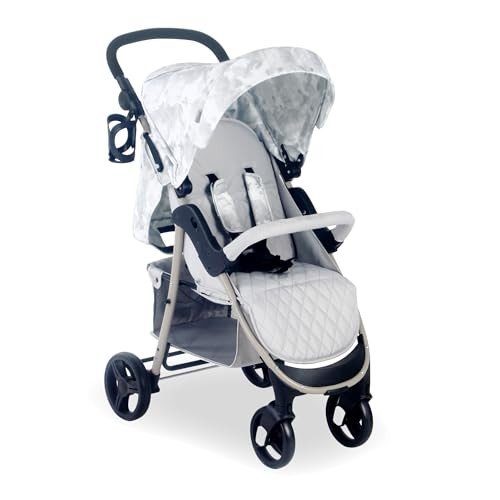Understanding Prams and Pushchairs: A Comprehensive Guide for Parents
When it concerns selecting the ideal mode of transportation for little ones, moms and dads are frequently overwhelmed by the variety of alternatives readily available. Prams and pushchairs are among the most common choices, and each has its own distinct functions catering to different needs. relevant website dives deep into the world of prams and pushchairs, detailing their distinctions, benefits, downsides, and suggestions for choosing the ideal one for your family.
What is the Difference Between a Pram and a Pushchair?
At first look, prams and pushchairs might appear similar, however they serve different functions based on a kid's age and developmental stage. Below are the primary distinctions:
| Feature | Pram | Pushchair |
|---|---|---|
| Age Range | Typically for newborns approximately 6 months | Ideal for children 6 months and older |
| Design | Flat, horizontal lying position for newborns | Upright seating position; more versatile and mobile |
| Usage | Mainly for walking with infants | May consist of multiple seating choices and configurations |
| Foldability | Typically bulkier and less portable | Usually light-weight and foldable for easy transport |
Kinds of Prams and Pushchairs
Picking the right pram or pushchair can depend on different factors, consisting of the type, functions, and lifestyle of the household. Below are the primary types of prams and pushchairs offered in the market:
Prams
- Traditional Prams: Designed for newborns, they frequently feature a deep and comfortable bassinet, making them ideal for young infants.
- Travel System Prams: These can transition from a bassinet to a young child seat, often consisting of a baby safety seat for ease of travel.
Pushchairs
- Standard Pushchairs: Offer an upright seat and are suitable for older babies and toddlers. They frequently include reclining abilities.
- Umbrella Pushchairs: Lightweight and extremely portable, these models fold compactly, making them perfect for travel.
- All-Terrain Pushchairs: Designed for rugged landscapes, they include bigger wheels and remarkable suspension systems for off-road capabilities.
Advantages and Disadvantages
Advantages of Prams
- Convenience for Newborns: Their flat, horizontal design is best for the healthy back advancement of infants.
- Stylish Designs: Many prams included sophisticated aesthetics, attracting fashion-forward moms and dads.
- Roomy: They tend to provide a bigger area for babies to move conveniently.
Disadvantages of Prams
- Bulkiness: They can be heavy and tough to steer, making them less hassle-free for public transport or crowded spaces.
- Cost: Prams typically include a higher price compared to pushchairs.
Benefits of Pushchairs
- Portability: Many pushchairs fold compactly and are light-weight, offering exceptional benefit for parents on the go.
- Versatility: With numerous configurations offered, pushchairs can fit numerous phases of a child's growth.
- Easier to Store: Their smaller size makes them much easier to save in compact areas.
Downsides of Pushchairs
- Less Comfort for Newborns: Most standard pushchairs disagree for very young babies unless created with a reclining function.
- Resilience Concerns: Budget pushchairs may not stand up to substantial usage compared to stronger pram designs.
Tips for Choosing the Right Pram or Pushchair
Selecting the best pram or pushchair requires cautious factor to consider. Here are some crucial elements to remember:
- Age Appropriateness: Consider your child's age. A pram might be better for a newborn, while a pushchair may be chosen for an older kid.
Lifestyle Compatibility:
- If you often travel or use public transport, a lightweight choice might be easier.
- For active households who delight in outside activities, a sturdy, all-terrain pushchair could be useful.
Storage Needs:
- Think about where you'll keep the pram or pushchair, as some models can take up considerable space.
- Budget plan Constraints: Prams can be pricey, particularly designer designs. Determine features that are crucial to you before purchasing.
- Security Features: Always look for vital security functions like straps, brakes, and strength when selecting a pram or pushchair.
FAQs
1. At what age can my baby begin utilizing a pushchair?
The majority of pushchairs appropriate for babies from 6 months, but some convertible models can securely accommodate more youthful infants when utilized with a safety seat or bassinet accessory.
2. Can I take a pram or pushchair on public transportation?
Many public transportation systems accommodate prams and pushchairs, however it's sensible to check specific policy guidelines ahead of time.
3. How can I preserve my pram or pushchair?
Regular cleaning, looking for wear and tear, and lubing moving parts will help in maintaining your pram or pushchair's performance and longevity.
4. Are travel systems worth the financial investment?
Travel systems can be a great financial investment for parents who frequently travel, providing an all-in-one service from vehicle to stroller. They use convenience and ease of transition, specifically for new parents.
5. Are there prams and pushchairs with extra functions?
Yes, numerous modern designs include features like cup holders, storage baskets, adjustable deals with, canopies for sun shading, and even folding systems that can be run with one hand.
Selecting in between a pram and a pushchair is a choice that affects daily parenting routines. By comprehending the differences, benefits, and suitable options, families can make educated choices that harmonize with their way of life needs. Whether it's a leisurely walk in the park with a pram or a daring outing with an all-terrain pushchair, the very best choices typically lead to treasured memories and pleasing experiences for both parents and children.

